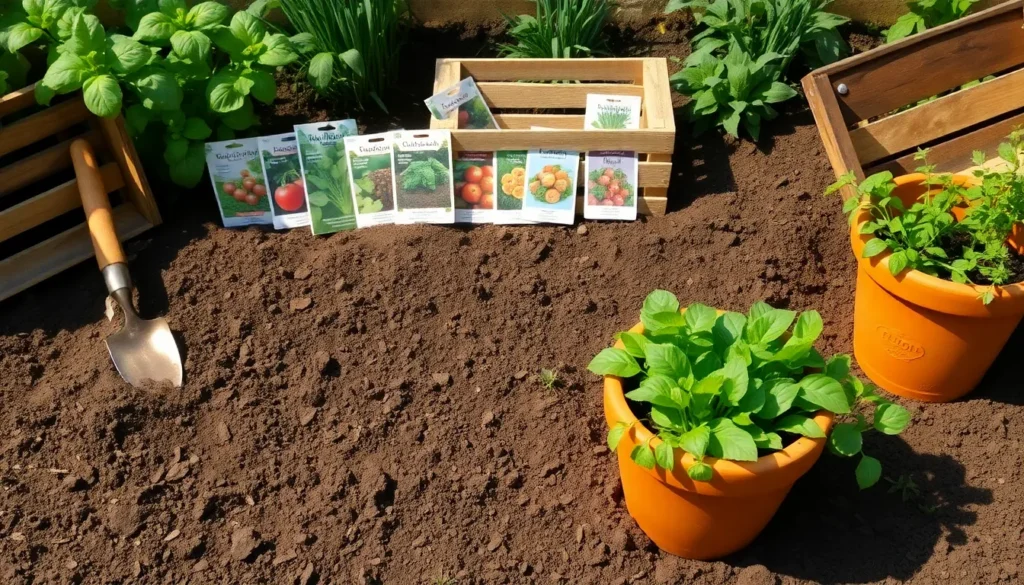Embarking on the journey of starting a garden from scratch is like opening a new chapter in your connection with nature, offering a canvas to paint with the greens and hues of life. Whether you’re nurturing your first seedling or have years of gardening wisdom under your belt, creating a garden from the ground up is an adventure rich with potential and personal growth.
For those new to gardening, this process is an invitation to learn the language of the soil, the rhythm of the seasons, and the joy of harvesting your own produce. Experienced gardeners, on the other hand, will find this endeavor an opportunity to refine techniques, explore new plant varieties, and perhaps rekindle the original joy that comes from watching life unfurl before your eyes.
In this article, we’ll guide you through the essential steps to cultivate your dream garden, from selecting the perfect location for your plants to understanding the basics of soil health and plant care. You’ll discover practical tips tailored to your level of experience, ensuring that your garden thrives and brings you satisfaction and pride for seasons to come. Whether your goal is to grow fragrant flowers, abundant vegetables, or a serene green retreat, you’re in the right place to start this exciting journey.
Select Your Garden Location
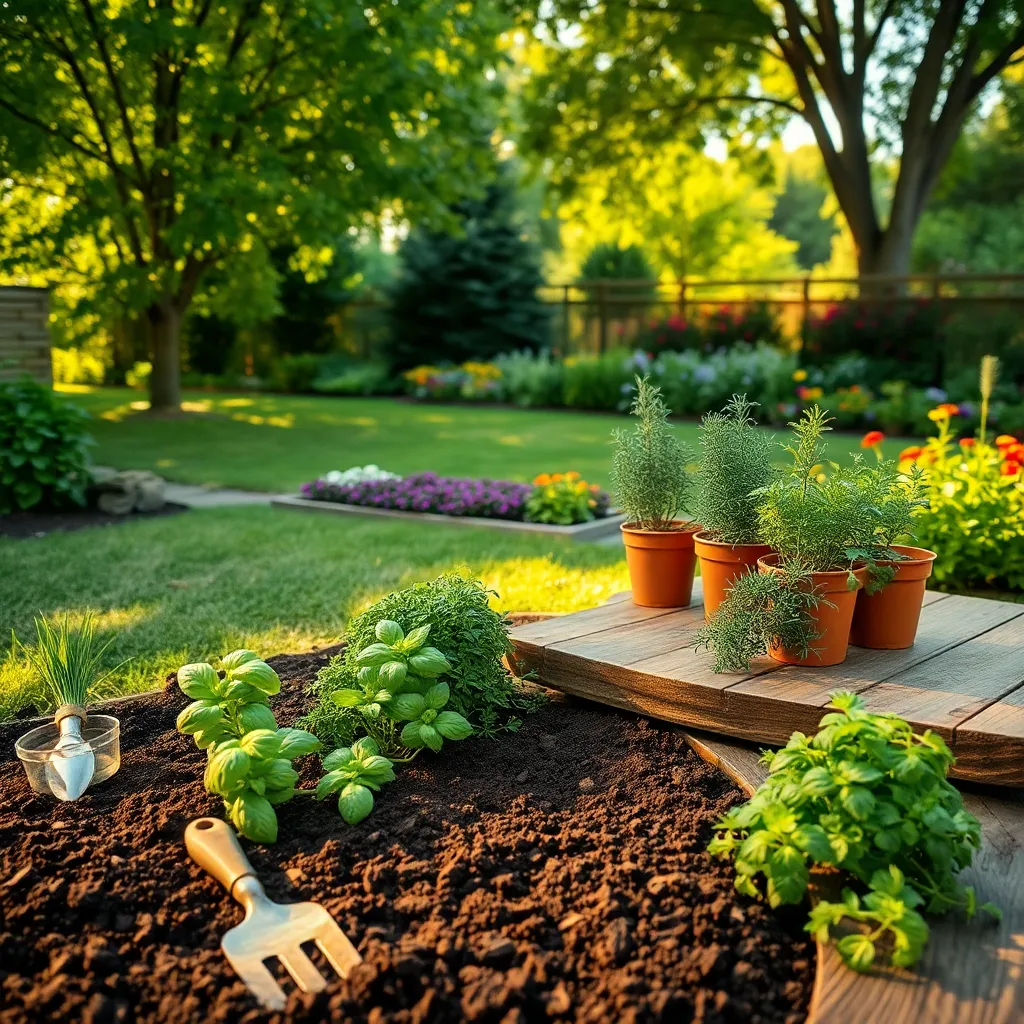
Choosing the right location for your garden is critical to its success. Begin by observing how the sun moves across your yard, aiming for a spot that receives at least six hours of direct sunlight each day.
For beginners, it’s important to remember that most vegetables and flowers thrive in sunny areas. If you have a shaded yard, consider growing shade-tolerant plants like hostas or ferns, which can add lush greenery without needing intense sunlight.
Soil quality is another key factor when selecting your garden location. Conduct a simple soil test to determine pH and nutrient levels, ensuring the soil can support your chosen plants; many vegetables prefer a slightly acidic to neutral pH (6.0 to 7.0).
Advanced gardeners should think about the microclimates within their garden. Areas near walls or fences can create warmer spots, perfect for heat-loving plants like tomatoes and peppers, which can extend your growing season.
Water accessibility is also crucial, so situate your garden near a water source for convenient irrigation. Consider installing a drip irrigation system to ensure consistent and efficient water delivery, especially during dry spells.
- Ensure your chosen location has good drainage to prevent waterlogging.
- Avoid placing your garden near large trees, as they can compete with your plants for nutrients and water.
- Mark out your garden area with stakes and string to visualize and plan your planting layout.
Test and Amend the Soil
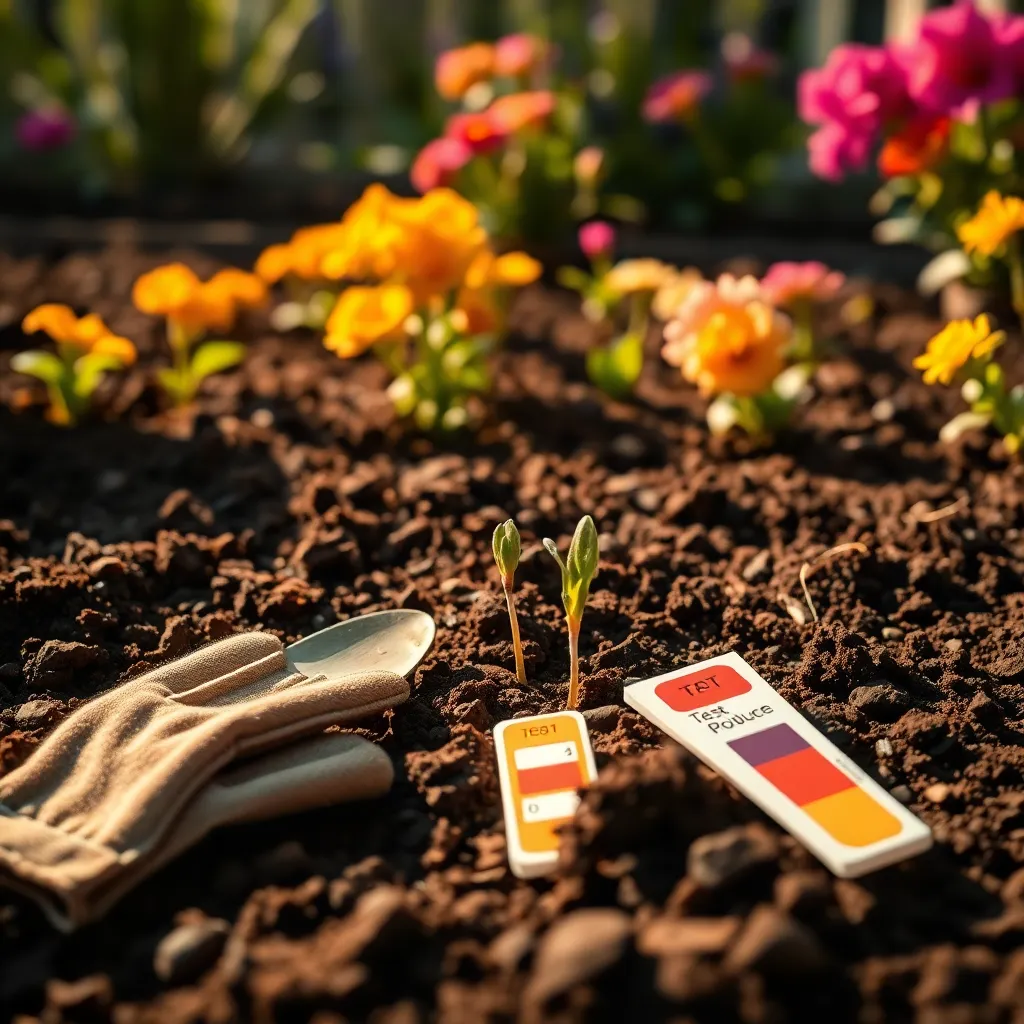
Before planting, it’s crucial to understand the condition of your soil. Testing your soil helps determine its nutrient content and pH level, which directly affects plant health.
To conduct a soil test, you can use a DIY kit or send a sample to a local extension service. These tests will reveal deficiencies in essential nutrients like nitrogen, phosphorus, and potassium.
Amending the soil is the next step if the test indicates nutrient deficiencies. Organic matter such as compost or well-rotted manure can improve soil structure and add necessary nutrients.
For soils with pH imbalances, specific amendments can help. Lime can raise pH in acidic soils, while sulfur can help lower pH in alkaline soils.
Regularly adding organic matter not only nourishes plants but also enhances soil drainage and aeration. Experienced gardeners might consider incorporating cover crops during off-seasons to further enrich the soil.
Plan Your Garden Layout
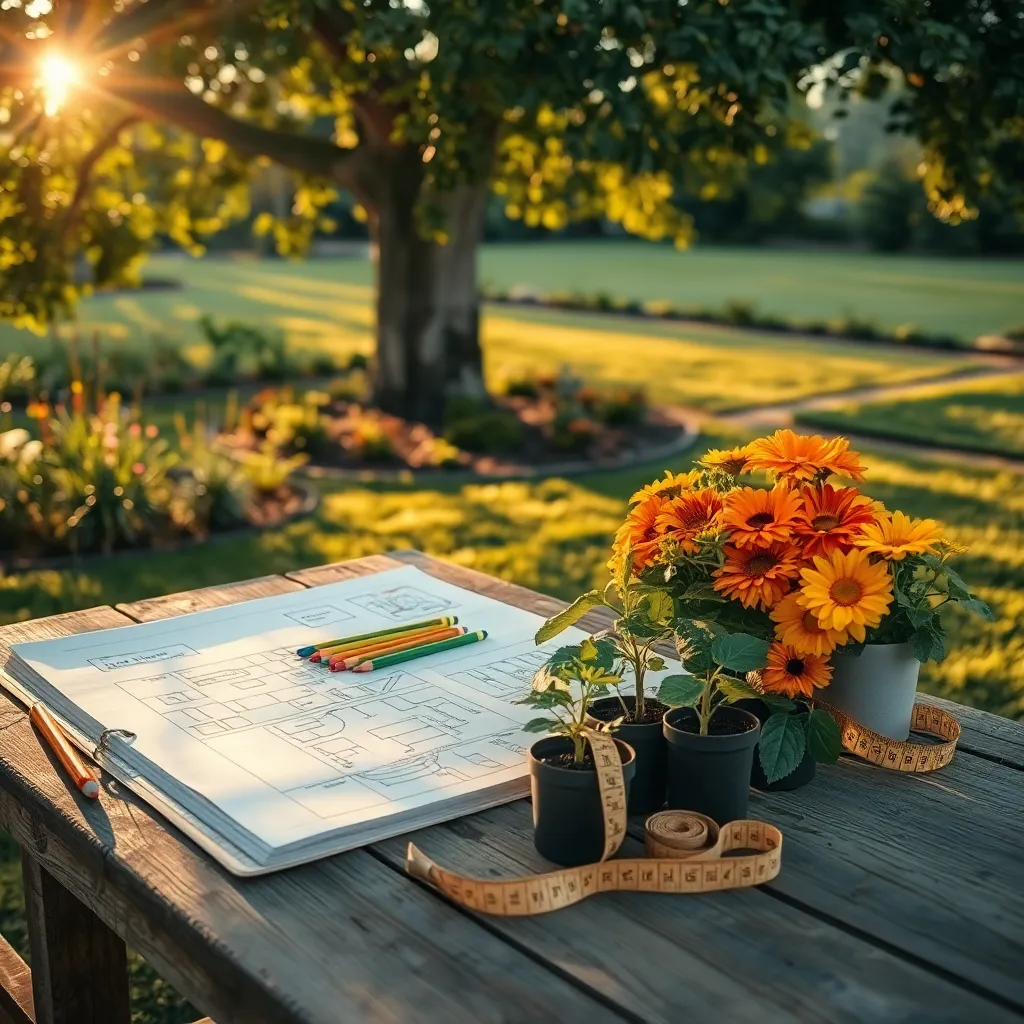
When planning your garden layout, consider the specific needs of each plant. Sunlight, space, and water requirements are crucial factors that influence where each plant should be positioned.
Start by observing your garden at different times of the day to understand the sun and shade patterns. This will help you place sun-loving plants like tomatoes and peppers in the brightest spots, while shade-tolerant options like lettuce and spinach can be tucked into cooler areas.
Grouping plants with similar water needs can make your watering routine more efficient. Consider using a drip irrigation system for plants that prefer consistent moisture, such as cucumbers and melons, to ensure they receive the right amount of water without wastage.
For a more advanced layout, incorporate principles of companion planting. Certain plants, like basil and tomatoes, benefit from being grown together as they can enhance each other’s growth and deter pests, making this a smart strategy for maximizing your garden’s productivity.
Choose Seeds and Seedlings
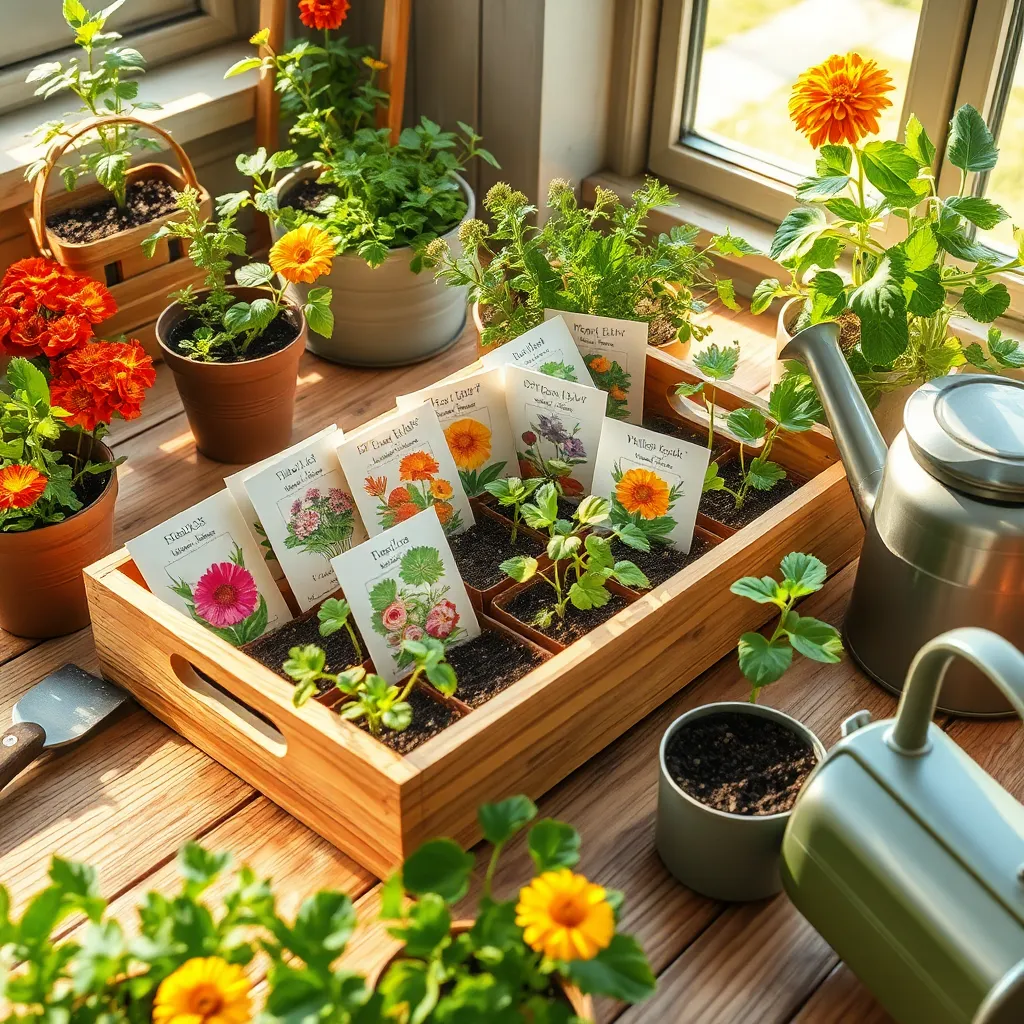
When choosing seeds or seedlings for your garden, consider your local climate and the season. Opt for plants that thrive in your region’s conditions, ensuring a higher chance of success as they grow.
Seeds offer the advantage of variety and cost-effectiveness, allowing you to start with a wide range of plants. However, seedlings are often easier for beginners, providing a head start in the growing process and reducing the time to harvest.
For those new to gardening, it’s best to start with hardy vegetables like radishes, lettuce, or carrots. These plants are relatively easy to grow from seeds and can tolerate a variety of soil types, making them perfect for beginners.
Experienced gardeners might enjoy experimenting with heirloom seeds, which offer unique flavors and characteristics. These seeds often require more attention to soil fertility and watering, but they reward you with exceptional produce and the satisfaction of preserving plant heritage.
Before planting, ensure that your soil is well-prepped with organic matter, such as compost, to provide essential nutrients. Regular watering is crucial, especially during the initial stages, so aim to keep the soil consistently moist but not waterlogged.
Plant and Water Carefully
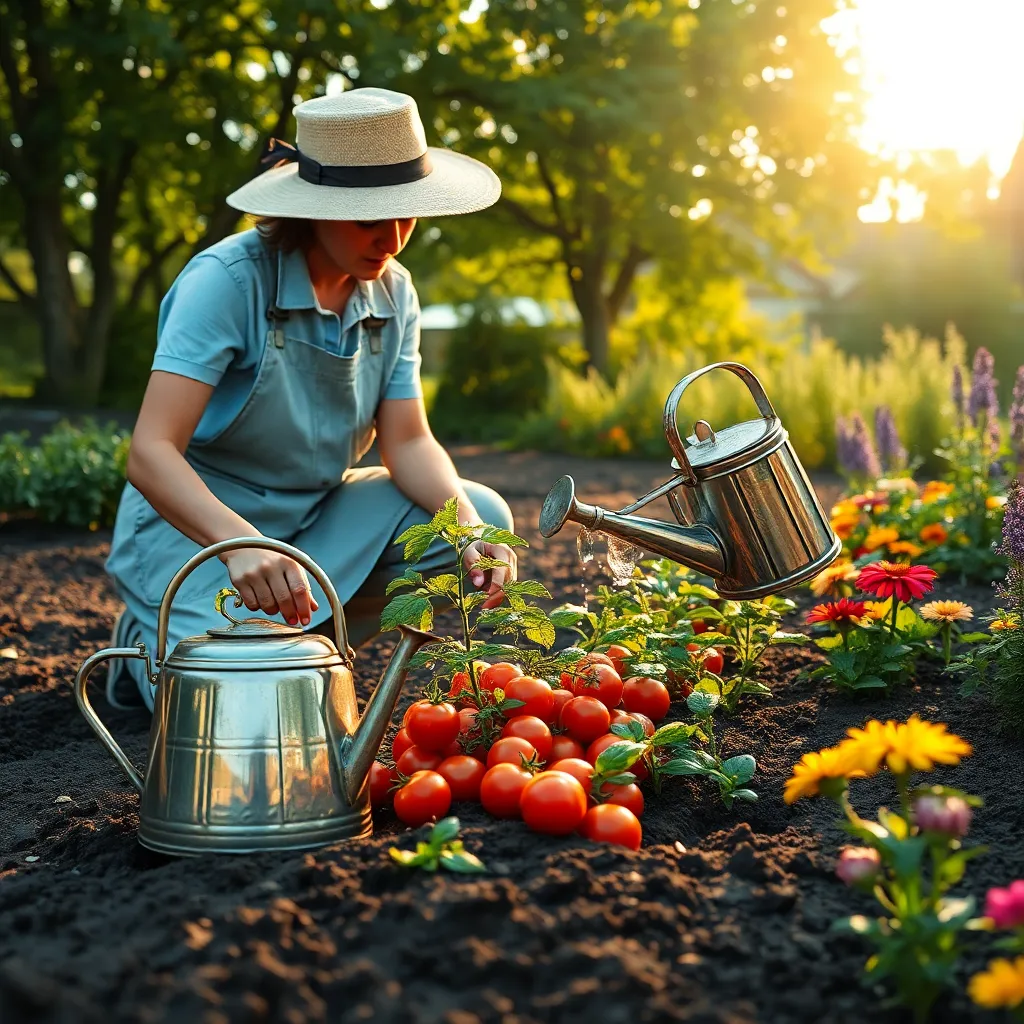
When you start planting, it’s important to consider the specific needs of each plant. Different plants prefer varying depths and spacing, so check the seed packet or plant label for guidance.
Watering your garden correctly is crucial for healthy plant growth. Early morning is the best time to water because it reduces evaporation and allows plants to dry before evening, lessening the chance of disease.
For beginners, using a soaker hose or drip irrigation can help ensure even watering without over-saturating the soil. These methods deliver water directly to the roots, reducing waste and keeping foliage dry.
Experienced gardeners may want to experiment with mulching to retain soil moisture. A layer of organic mulch, like straw or wood chips, helps maintain consistent soil temperature and reduces the need for frequent watering.
Always be aware of the specific watering needs of your plants; for example, succulents and cacti require less frequent watering than vegetables or flowers. Adjust your watering schedule based on plant type, weather conditions, and soil drainage capabilities.
Conclusion: Growing Success with These Plants
In embarking on the journey of starting a garden from scratch, we’ve explored five fundamental relationship concepts: the importance of nurturing patience, the value of consistent communication, the benefits of shared goals, the need for adaptability, and the power of mutual support. These foundational elements mirror the care and attention required to cultivate a thriving garden, and when applied to relationships, they can foster deep, lasting bonds.
As an actionable next step, take a moment today to engage in a heartfelt conversation with your partner or loved one about a shared goal, whether it’s planning a weekend getaway or starting a small project together. This simple act can strengthen your connection and set the stage for deeper collaboration.
Don’t forget to bookmark this article as a handy reference guide for nurturing both your garden and your relationships. By revisiting these concepts, you can continually enrich your interactions and navigate challenges with grace.
Looking forward, remember that with patience, communication, and shared effort, your relationships can bloom beautifully, just like a well-cared-for garden. Embrace these insights, and watch as your connections flourish and grow stronger each day.

